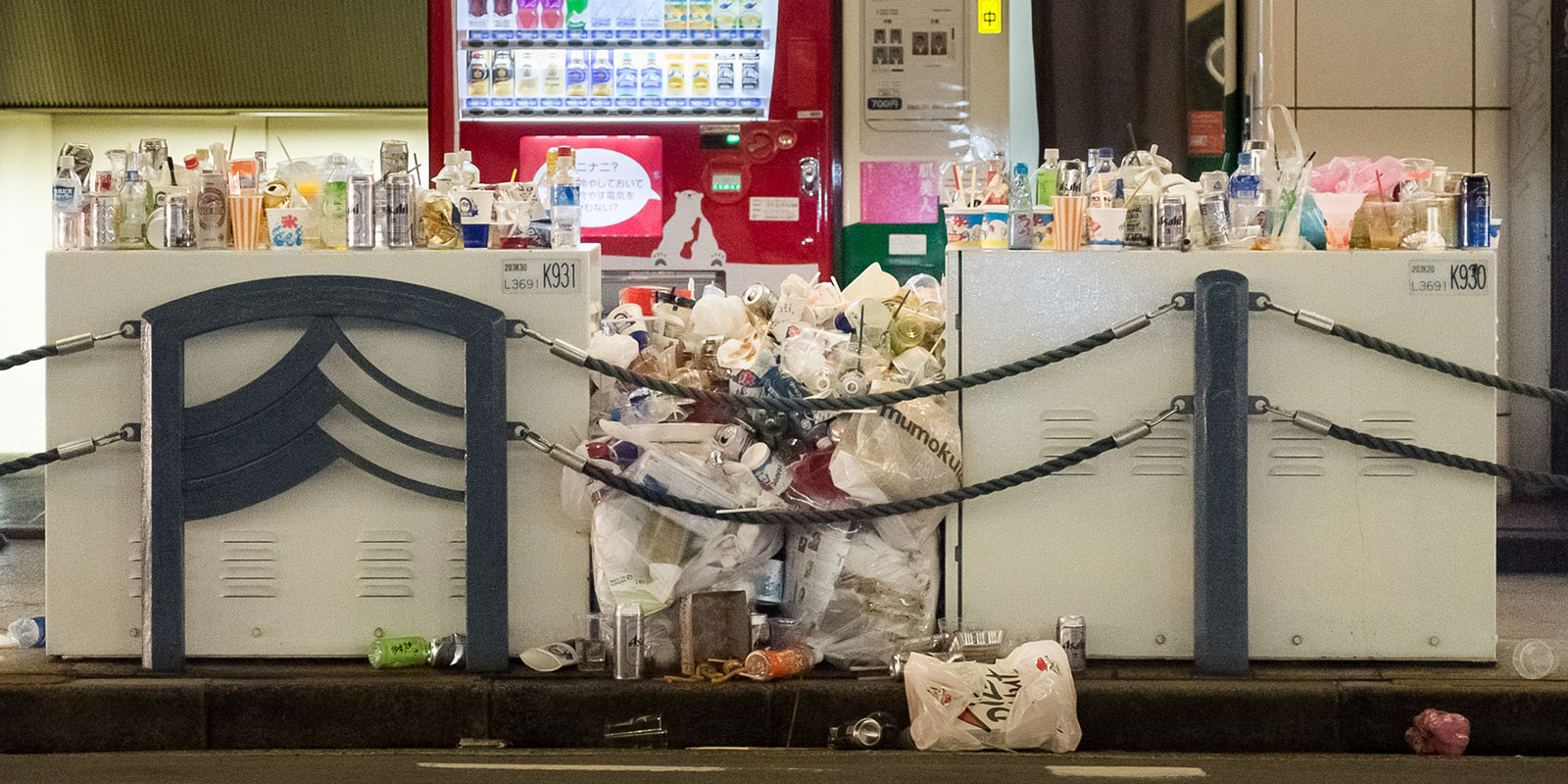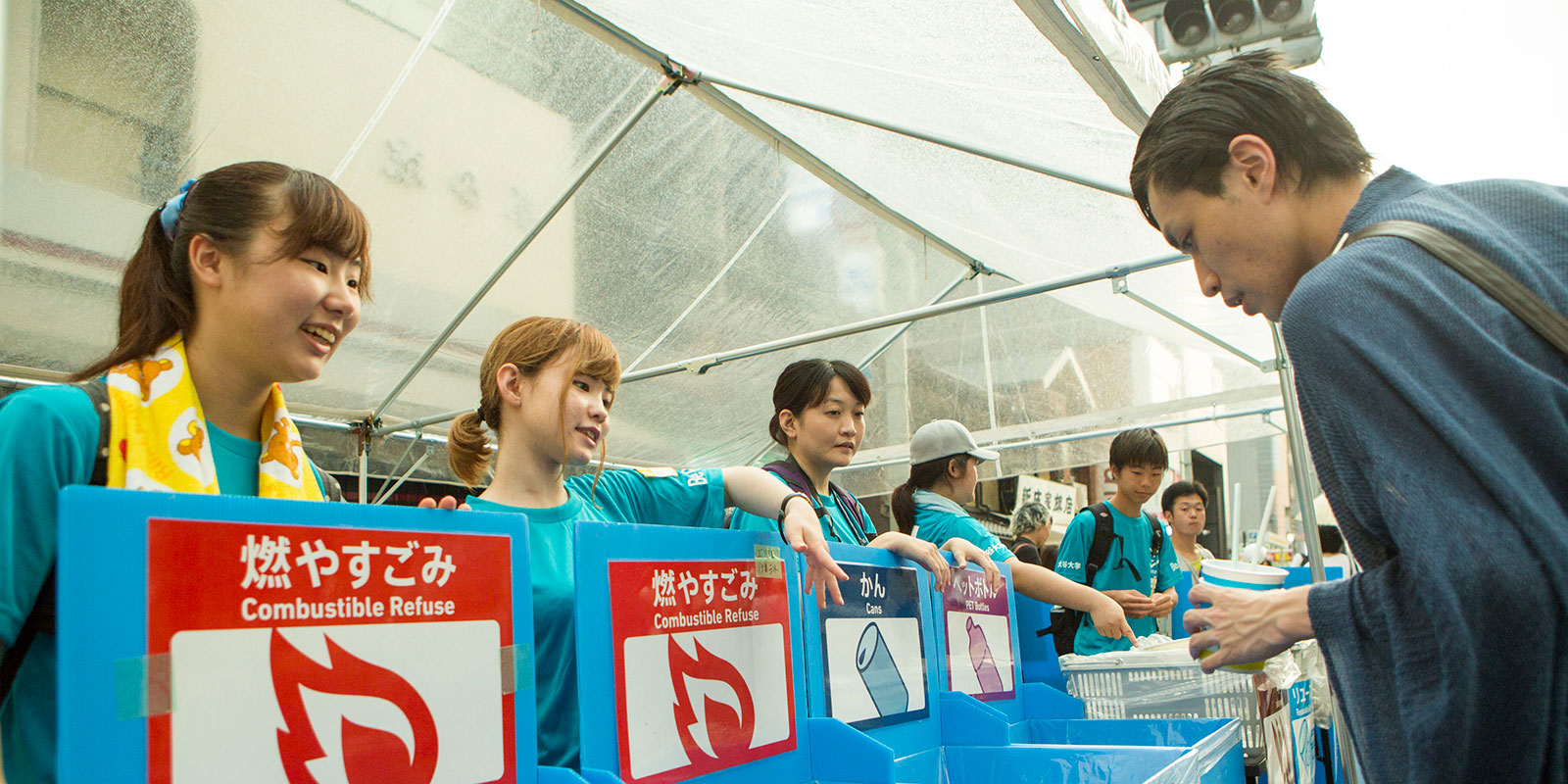Good clean fun
How one of Japan’s oldest festivals is reducing waste and working towards responsible consumption
Traditional festivals or matsuri are an essential part of a Japanese summer. One of the country’s oldest seasonal celebrations is the Gion Matsuri in the ancient capital of Kyoto, first held way back in 869. Famed for its brilliantly decorative floats, traditional costumes, and mouthwatering street food, the resplendent event is now working to sustain itself for the next 1,000 years by becoming more eco-friendly.
“Over recent years, we’ve seen festival organizers become more aware of environmental issues”
The Gion Matsuri is held throughout July in central Kyoto and at the Yasaka shrine, with hundreds of festival stalls lined up around the Shijo Karasuma area during the famous float parades, which take place over a weekend in the middle of the month. With crowds packing the streets, the Gion Matsuri Zero Waste Association has a big job on its hands minimizing the environmental impact. “Hiring waste disposal and cleaning companies to keep the streets clean are common initiatives [at festivals across Japan],” says Kohei Ota, who heads the association. “But there haven’t been many initiatives to reduce the amount of waste itself.”
 Courtesy of Environment Design Laboratory Ecotone
Courtesy of Environment Design Laboratory Ecotone
The association was established 20 years ago and has found that some of the most effective changes are counterintuitive. For example, the Gion Matsuri would set up garbage cans in 1,400 locations across the festival area, but in 2014 the Zero Waste Association suggested reducing that number to 50. “Back then, the thinking was that not having enough garbage cans would lead people to litter,” says Ota. “But no matter how much capacity you have, those cans fill up quickly. With 1,400 locations, you can’t keep an eye on them all, and some will overflow. That then led people to throw their trash on the street, so despite all the cans, the area was full of litter.”
While the association reduced the number of garbage disposal sites radically, they also staffed all of them with volunteers who would help festivalgoers separate their trash. “Before the festival, we’d plan out how crowds are likely to move to help place garbage cans in the right locations,” says Ota. “Some local people were against reducing the number of disposal sites. But in reality, having garbage cans in visible places and supervised by staff has reduced littering.”
Switching from plastic plates and cutlery to reusable alternatives is another successful initiative promoted by the association. “We’ve provided reusable tableware to the people running the food stalls and helped wash it afterwards,” explains Ota. “Festivalgoers are encouraged to return their crockery to collection sites. At this year’s Gion Matsuri, 200,000 meals were provided on reusable plates.”
“At this year’s Gion Matsuri, 200,000 meals were provided on reusable plates”
 Courtesy of Environment Design Laboratory Ecotone
Courtesy of Environment Design Laboratory Ecotone
The Zero Waste Association’s efforts have been inspired by eco-friendly practices overseas, particularly in Europe. “Reusable glasses and cups have long been commonplace at German Christmas markets and the Oktoberfest, for example,” says Ota. Reusable tableware is set to become more common at major events in Japan, including the Osaka-Kansai Expo in 2025.
Alongside their work with the Gion Matsuri, Ota and his team now collaborate with some 400 events throughout the country annually, from music festivals to kindergarten happenings. “Over recent years, we’ve seen festival organizers become more aware of environmental issues,” says Ota, who hopes that efforts to reduce waste and reuse resources will be accelerated throughout society and in daily life. “We need everyone on board to make a difference,” he says.